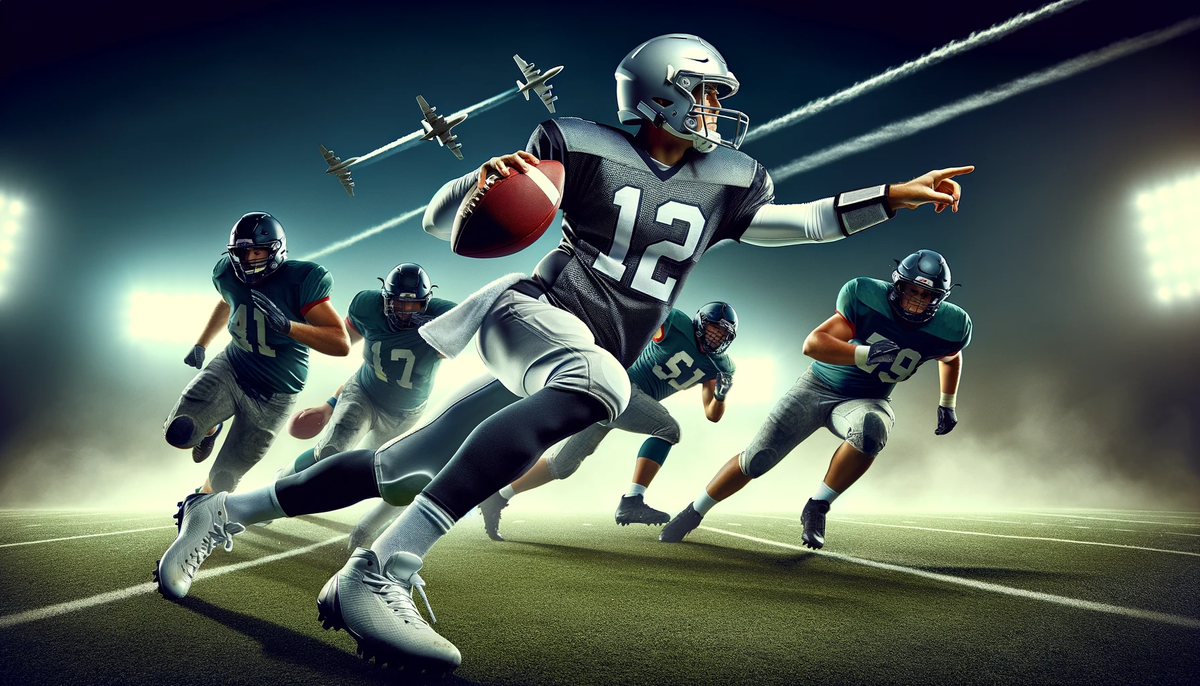Maximizing Quarterback Performance: The Benefits of Decision Making, Rush Evasion, and Visual Impairment Drills

As a quarterback, throwing routes during the offseason is essential but that alone does not sufficiently mimic the physiological demands of on-field play. You can scour the internet and find throwing drills that incorporate cones and ladders but when do you ever see a quarterback chopping his feet and then throwing a ball in game? When do you see a quarterback rigidly moving from one cone to another and then making a throw? The reality is that your on-field throwing work (different than speed and agility) should work to mimic the demands of the playing field. Therefore, integrating three game mimicking drills is highly recommended: decision making, rush evasion, and visual impairment drills.
This post will dive into those drill types in greater detail but first a few notes to level set.
- These drills are for on field training. There are separate arm plyometrics, arm care and patterning drills that are done off the field and pre-throw that are vital to biomechanical sequencing.
- These types of drills should be integrated systematically. In other words, you build a mechanical base early in the offseason and integrate these drills as you develop.
- A young elementary thrower should not incorporate these at the onset. They should be focusing on fundamental biomechanics and footwork.
If you're interested in QB specific throwing, lifting and sprint training, customized to you, with the same systems used to train NFL Quarterbacks, take the assessment and get the app at kinetex.co. If you're interested in reading about all things quarterbacking and throwing biomechanics, subscribe to the blog.
Decision Making Drills:
The ability to make quick and accurate decisions under pressure involves complex cognitive and neural processes. These drills aim to enhance neural plasticity and improve the speed and accuracy of information processing. By simulating scenarios where quarterbacks must read defenders, identify potential receivers, and make the right throw, decision making drills enhance processing speed, which along with accuracy, is the most important quarterback specific trait. These can be isolated to two person reads with your dad and friends or done at scale in 7 on 7 tournaments. You are training the "shoot don't shoot" reflex which is vital on the field.
Pass Rush Evasion Drills:
The evasion of pass rushers while delivering an accurate football requires rapid and coordinated motor movements on the turf. This on field requirement can be simulated outside the arena and prepares you for real games much more effectively than simply throwing routes. By a parent simulating a rush or by using football dummies to simulate defenders, these drills promote the development of motor patterns that can be utilized in crunch time when the lights are on. A key point here is that there has to be a randomness to the pass rush that forces a reaction i.e. the quarterback should not know which way rusher is going to force him to evade. Force the quarterback to react and not know what is coming because that mimics the game.
Visual Impairment Drills
In a game, no matter what your height is, quarterbacks will experience impaired vision due to the 6 foot 6 monsters on the offensive and defensive line. Visual impairment drills aim to enhance the processing of incomplete visual information, which is essential for making accurate throws when you cannot see. By having a friend/dad/coach using his hands and body (much like an O or D lineman) to block your sight you can sufficiently simulate impaired vision. You can also use tools such as tinted goggles or strobe glasses if you want to mix it up. Quarterbacks improve their ability to interpret visual cues and make accurate throws under challenging circumstances when you incorporate these drills.
In summary, by integrating decision making, rush evasion, and visual impairment drills into offseason training, quarterbacks can enhance the same neurological and motor pathways that will be firing on gameday. These drills enhance a quarterback's ability to make quick decisions under pressure, evade pass rushers, barely see the wideout and deliver an accurate throw to win the game.
If you're interested in QB specific throwing, lifting and sprint training, customized to you, with the same systems used to train NFL Quarterbacks, take the assessment and get the app at kinetex.co. If you're interested in reading about all things quarterbacking and throwing biomechanics, subscribe to the blog.
